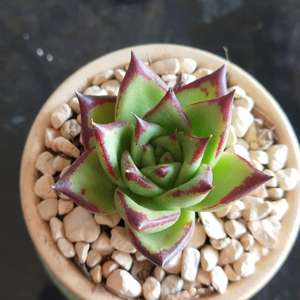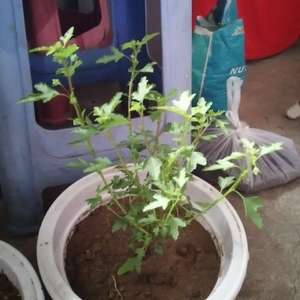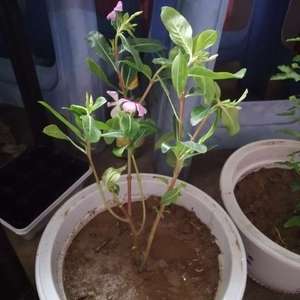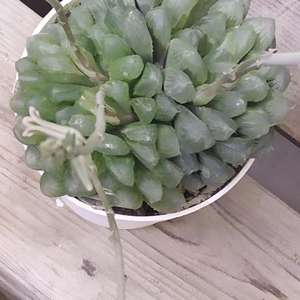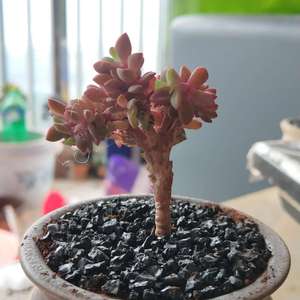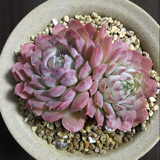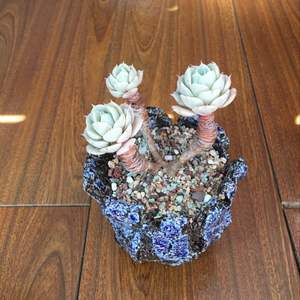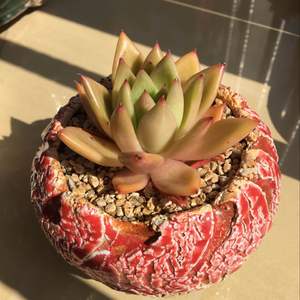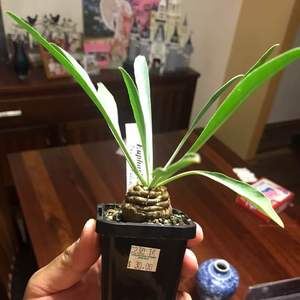文章
Miss Chen
2020年04月13日

金叶女贞常发生的病害主要有:叶斑病、轮纹病、煤污病等。虫害主要有:介壳虫、蛴螬等。

一、病害
1.褐斑病
危害症状:褐斑病是女贞最严重的叶斑类病害,是病原真菌引起的。发病初期叶片出现褐色小斑,周围有紫红色晕圈,斑上可见黑色霉状物。随着气温的上升,有时数个病斑相连,最后叶片焦枯脱落。该病原菌生长最适宜的温度范围为25℃至30℃,孢子萌发适温18℃至27℃,在温度合适且湿度大的情况下,孢子几小时即可萌发。进入雨季后,如有植株栽植密,通风透光差,株间形成了一个相对稳定的高湿、温度适宜的环境,对病菌孢子的萌发和侵入非常有利,且病菌可反复侵染,不加以重视,可能会使病害大面积发生。
防治方法:发病时叶片大量脱落,严重影响景观。可喷多菌灵1000倍液或乙生1200倍液。
2.煤污病
危害症状:煤污病的发生主要是由于受蚧虫的危害后分泌物而诱发产生。受危害后植株、叶片、枝干布满黑色煤尘状物,叶片光合作用受到抑制,并且枝、干、叶片整株均有危害。
防治方法:应采用病虫兼治,喷50%退菌特可湿性粉剂600倍加40%氧化乐果乳油800倍混合防治。

二、虫害
1.康氏粉蚧
危害症状:又名桑粉蚧。雌成虫体长约5毫米,宽约3毫米,体扁椭圆形,粉红色,体表被有白色蜡粉;若虫椭圆形,扁平,淡黄色,体表也覆白色蜡粉;卵椭圆形,淡黄色,卵囊白色棉絮状。数十粒集中成块。一年生3代,第一代若虫盛发期5月中下旬,第二代盛发期7月中下旬,第三代盛发期8月下旬至9月上旬。刺吸植物汁液,造成枝叶失水萎蔫,严重时整株萎缩枯死。还可诱发煤污病。
防治方法:秋、冬季清扫枯枝、落叶集中烧毁,杀死其中的越冬卵或雌虫。在卵孵化盛期或一龄若虫期进行药物防治效果好,速扑杀或毒死蜱1000至1500倍液每隔5至7天喷洒一次,连续用药2至3次,就能将其全部铲除。喷药时注意全株喷洒(每次打药时不能只喷叶面,要把药枪穿过表层叶打在枝干上),这样才能达到良好的防治效果。
2.蛴螬
危害症状:蛴螬危害定植二年以上金叶女贞苗木的根系,咬食毛细根及主根表皮,以至根系坏死腐烂,有时造成植株仅剩表层毛细根,吸水能力差。根系受损后,一旦遇到高温天气,整棵植株萎蔫,严重时会干枯死亡。
防治方法:危害期间用毒饵诱杀,可用辛硫磷0.5千克,加水0.5千克与15千克煮半熟的种子等饵料混合,在危害期夜间均匀撒在苗床上。或1000倍辛硫磷灌根,辛硫磷光解作用较强,宜在夜间施用或埋入土壤中。

一、病害
1.褐斑病
危害症状:褐斑病是女贞最严重的叶斑类病害,是病原真菌引起的。发病初期叶片出现褐色小斑,周围有紫红色晕圈,斑上可见黑色霉状物。随着气温的上升,有时数个病斑相连,最后叶片焦枯脱落。该病原菌生长最适宜的温度范围为25℃至30℃,孢子萌发适温18℃至27℃,在温度合适且湿度大的情况下,孢子几小时即可萌发。进入雨季后,如有植株栽植密,通风透光差,株间形成了一个相对稳定的高湿、温度适宜的环境,对病菌孢子的萌发和侵入非常有利,且病菌可反复侵染,不加以重视,可能会使病害大面积发生。
防治方法:发病时叶片大量脱落,严重影响景观。可喷多菌灵1000倍液或乙生1200倍液。
2.煤污病
危害症状:煤污病的发生主要是由于受蚧虫的危害后分泌物而诱发产生。受危害后植株、叶片、枝干布满黑色煤尘状物,叶片光合作用受到抑制,并且枝、干、叶片整株均有危害。
防治方法:应采用病虫兼治,喷50%退菌特可湿性粉剂600倍加40%氧化乐果乳油800倍混合防治。

二、虫害
1.康氏粉蚧
危害症状:又名桑粉蚧。雌成虫体长约5毫米,宽约3毫米,体扁椭圆形,粉红色,体表被有白色蜡粉;若虫椭圆形,扁平,淡黄色,体表也覆白色蜡粉;卵椭圆形,淡黄色,卵囊白色棉絮状。数十粒集中成块。一年生3代,第一代若虫盛发期5月中下旬,第二代盛发期7月中下旬,第三代盛发期8月下旬至9月上旬。刺吸植物汁液,造成枝叶失水萎蔫,严重时整株萎缩枯死。还可诱发煤污病。
防治方法:秋、冬季清扫枯枝、落叶集中烧毁,杀死其中的越冬卵或雌虫。在卵孵化盛期或一龄若虫期进行药物防治效果好,速扑杀或毒死蜱1000至1500倍液每隔5至7天喷洒一次,连续用药2至3次,就能将其全部铲除。喷药时注意全株喷洒(每次打药时不能只喷叶面,要把药枪穿过表层叶打在枝干上),这样才能达到良好的防治效果。
2.蛴螬
危害症状:蛴螬危害定植二年以上金叶女贞苗木的根系,咬食毛细根及主根表皮,以至根系坏死腐烂,有时造成植株仅剩表层毛细根,吸水能力差。根系受损后,一旦遇到高温天气,整棵植株萎蔫,严重时会干枯死亡。
防治方法:危害期间用毒饵诱杀,可用辛硫磷0.5千克,加水0.5千克与15千克煮半熟的种子等饵料混合,在危害期夜间均匀撒在苗床上。或1000倍辛硫磷灌根,辛硫磷光解作用较强,宜在夜间施用或埋入土壤中。
0
0
文章
ritau
2020年04月12日

Indoor activity for Quarantine!
1. Know when to transplant.
Aloe plants have relatively short roots and heavy leaves, so they are commonly moved to a heavier pot when they become top-heavy and tip over. If Aloe vera runs out of space for its roots to grow, it may start to produce "pups" that can be moved to their own pot (see the Propagating section). If you are more interested in the adult plant growing than producing new plants, transplant it to a larger pot before the roots begin to circle the walls of its container.
2. Give the plant adequate sunlight and warmth.
Aloe vera plants prefer 8–10 hours of sunlight a day. While they grow best in warm or hot temperatures, they are capable of surviving cooler seasons in a more dormant state. However, they may suffer harm if exposed to temperatures below 25ºF (-4ºC).
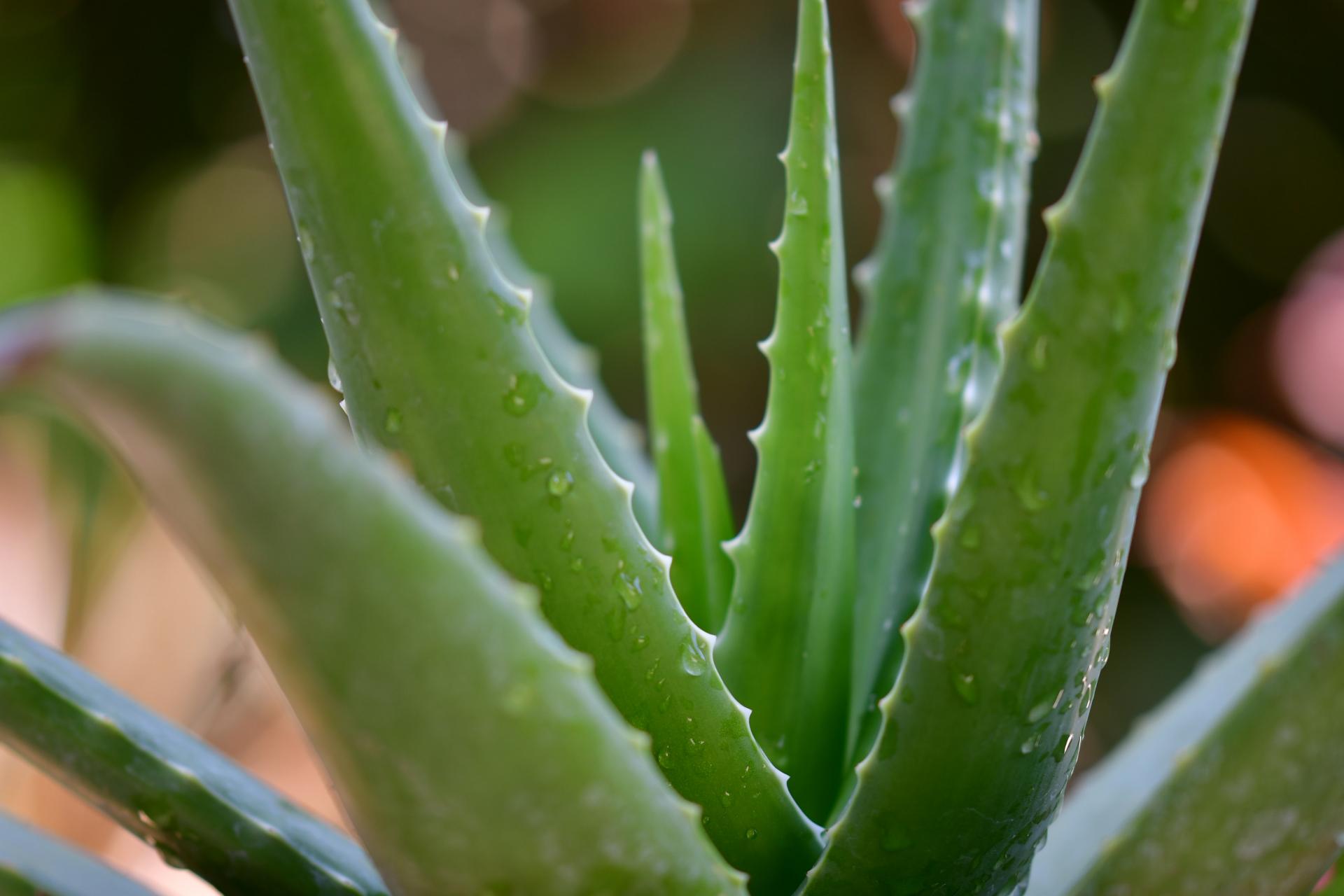
3. Plant the Aloe vera in well draining soil.
Aloe vera plants are adapted for survival in dry conditions, and may rot if planted in soil that collects standing water. Use a cactus potting mix, or create your own mix using equal parts soil, sand, and gravel.
4. Cover the root ball when planting but do not let the leaves touch the soil.
Place the Aloe vera root ball just below the soil surface. If any of the thick, green leaves are partially buried or touch the soil, they may rot.
5. Cover the surface of the soil with gravel or pebbles (optional).
Place a layer of small rocks around the base of the aloe plant to keep the soil in place and reduce evaporation. This is not required for your aloe plant to thrive, so you may leave the soil exposed if you prefer the appearance.
6. Do not water for the first few days after planting.
Before you start watering, give the aloe plant a few days to repair any roots that may have been damaged during planting. Watering damaged roots increases the chance of root rot. Aloe plants store plenty of water in their leaves, and should not be harmed by the lack of water during this time. Give it a light watering the first one or two times you water if you would like to be extra safe.

Enjoy your DIY!
1. Know when to transplant.
Aloe plants have relatively short roots and heavy leaves, so they are commonly moved to a heavier pot when they become top-heavy and tip over. If Aloe vera runs out of space for its roots to grow, it may start to produce "pups" that can be moved to their own pot (see the Propagating section). If you are more interested in the adult plant growing than producing new plants, transplant it to a larger pot before the roots begin to circle the walls of its container.
2. Give the plant adequate sunlight and warmth.
Aloe vera plants prefer 8–10 hours of sunlight a day. While they grow best in warm or hot temperatures, they are capable of surviving cooler seasons in a more dormant state. However, they may suffer harm if exposed to temperatures below 25ºF (-4ºC).

3. Plant the Aloe vera in well draining soil.
Aloe vera plants are adapted for survival in dry conditions, and may rot if planted in soil that collects standing water. Use a cactus potting mix, or create your own mix using equal parts soil, sand, and gravel.
4. Cover the root ball when planting but do not let the leaves touch the soil.
Place the Aloe vera root ball just below the soil surface. If any of the thick, green leaves are partially buried or touch the soil, they may rot.
5. Cover the surface of the soil with gravel or pebbles (optional).
Place a layer of small rocks around the base of the aloe plant to keep the soil in place and reduce evaporation. This is not required for your aloe plant to thrive, so you may leave the soil exposed if you prefer the appearance.
6. Do not water for the first few days after planting.
Before you start watering, give the aloe plant a few days to repair any roots that may have been damaged during planting. Watering damaged roots increases the chance of root rot. Aloe plants store plenty of water in their leaves, and should not be harmed by the lack of water during this time. Give it a light watering the first one or two times you water if you would like to be extra safe.

Enjoy your DIY!
0
0
文章
Miss Chen
2020年04月11日

散尾葵是一种热带植物,喜欢温暖湿润的环境,放在室内养基本上是没有什么问题的,我们在养护的过程中,发现散尾葵黄叶了,有的叶子还卷曲起来,非常让人心急,应该怎么来养护它呢?
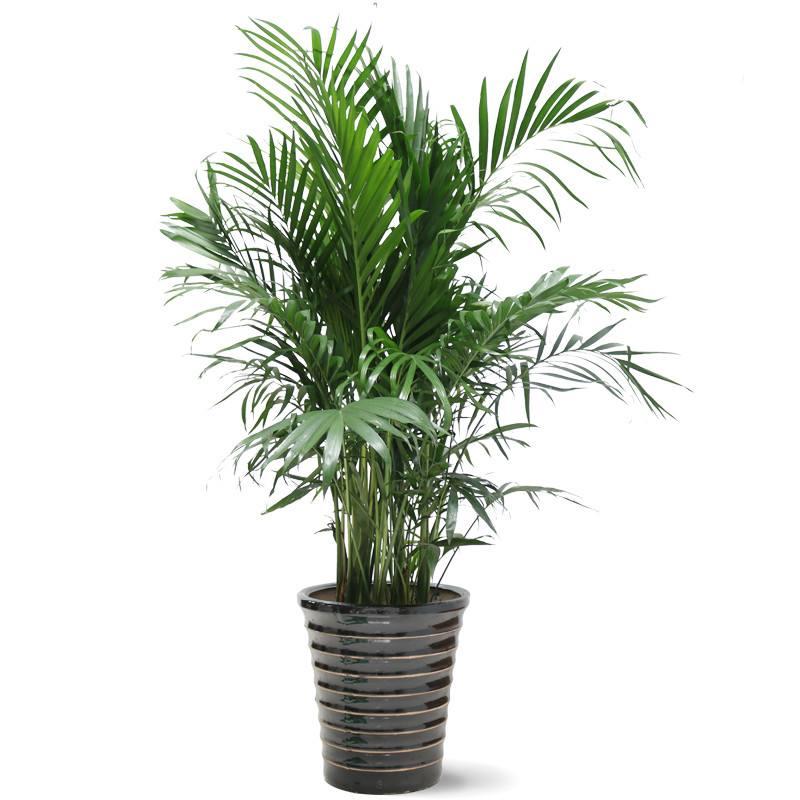
1、散尾葵一般是经不起长时间的太阳光照的,但是也不能完全的不给它光照,所以需要把它养护在有散光的地方就行了,除了光照原因,还一个就是浇水上的问题了,散尾葵体型比一般植株要大,所以它也需要大量的水分,特别是在夏天,水分蒸发的比较快,就要及时的浇水,让它处在一个湿润的环境当中。
2、不过在浇水前也要检查好土壤的湿润程度,如果土壤太过潮湿的话就不用进行浇水,我们可以在这个时候给它进行透气,松松土,不过要小心别伤到它的根部,我们在浇水的同时,也要注意不要积水,浇透就好,一般养花的朋友都知道,任何植物都不能积水,否则容易引起烂根。

3、因为散尾葵是属于较大的植物,所以我们要选择透气性强的土壤,不然浇水的话,水分也渗不下去,然后也要定期给它换一下盆土,这样就有利于它的生长。如果散尾葵黄叶了就要给它进行修剪,把黄掉的叶子和卷曲的叶子全部剪掉,以免这些叶子抢走养分。

1、散尾葵一般是经不起长时间的太阳光照的,但是也不能完全的不给它光照,所以需要把它养护在有散光的地方就行了,除了光照原因,还一个就是浇水上的问题了,散尾葵体型比一般植株要大,所以它也需要大量的水分,特别是在夏天,水分蒸发的比较快,就要及时的浇水,让它处在一个湿润的环境当中。
2、不过在浇水前也要检查好土壤的湿润程度,如果土壤太过潮湿的话就不用进行浇水,我们可以在这个时候给它进行透气,松松土,不过要小心别伤到它的根部,我们在浇水的同时,也要注意不要积水,浇透就好,一般养花的朋友都知道,任何植物都不能积水,否则容易引起烂根。

3、因为散尾葵是属于较大的植物,所以我们要选择透气性强的土壤,不然浇水的话,水分也渗不下去,然后也要定期给它换一下盆土,这样就有利于它的生长。如果散尾葵黄叶了就要给它进行修剪,把黄掉的叶子和卷曲的叶子全部剪掉,以免这些叶子抢走养分。
0
1



